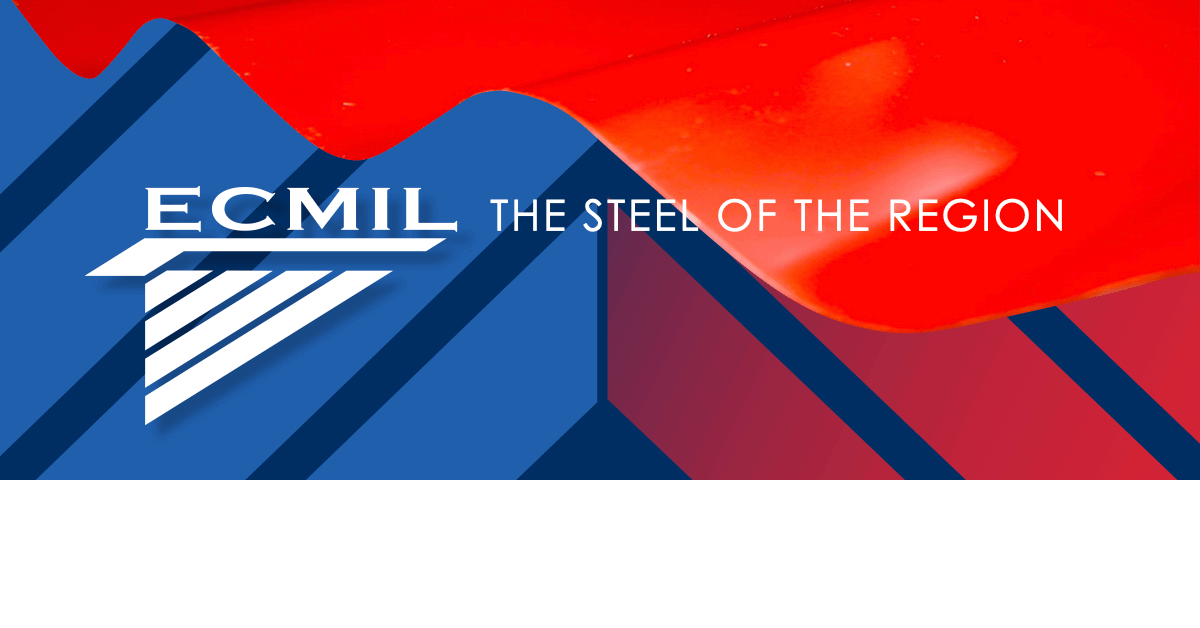The combination of PVC and Steel?
East Caribbean Plastics Industries Limited, a subsidiary of ECMIL,
manufactures PVC, CPVC and Electrical Conduit.
At first glance, you might ask the question,
how are steel and PVC connected?
Simple answer; on site.
While rebar and welded mesh are integral during the early building process, so are water pipes, electrical conduits and drain pipes, not to mention underground and foundation water storage. It makes sense that the company should supply such an essential commodity. From start to finish, when a building uses plumbing and electricity, PVC is in play.
Polyvinyl chloride, commonly known as PVC, is the third-most widely produced synthetic plastic polymer, after polyethylene and polypropylene. It has two basic forms; rigid, used in construction for pipe, in profile applications such as doors, windows and siding, and for bottles and non-food packaging and flexible; used in electrical cable insulation, imitation leather, signage, inflatable products, and many applications where it replaces rubber.
PVC was discovered by accident by a German chemist in the late 19th century and Griesheim-Elektron, a German chemical company attempted to use the substance, unsuccessfully in commercial products, in the early 20th century.
It was not until the development of a method to plasticize PVC, by Waldo Semon and the B.F. Goodrich Company, that the more flexible product achieved widespread commercial use.
Pipes made from PVC,
are manufactured by extrusion.
This process starts by feeding plastic material (pellets, granules, flakes or powders) from a hopper into the barrel of the extruder.
The material is gradually melted by the mechanical energy generated by turning screws and by heaters arranged along the barrel.
The molten polymer is then forced into a die, which shapes the polymer into a pipe that hardens during cooling.
A great advantage of extrusion is that pipes can be made to any length, with an integrated coupling consisting of a push fit joint at one end, bonded by
a solvent cement, or by using injection-moulded couplings such as elbows, T-junctions and valves.
ECPIL's experience of the regional market has led to
the provision of a comprehensive range of PVC sizes and uses.
Standard Drain, Waste and Vent pipes, or DWV,
with a Standard Dimension Ratio, or SDR of 32.5
(the higher the number the thinner the pipe wall)
and 125psi, are supplied at sizes from 1.25" to 4".
Schedule 40 with an SDR of 20, used for high pressure applications, are supplied at sizes from .5" to 4"
and are also available in CPVC, a similar material to PVC, but with an increased chlorine content.
This difference in makeup allows CPVC to withstand
a wider range of temperatures and has become
the standard for hot water applications.
The company's PVC product list would not be complete, without the mention of Electrical Conduit, which is available in 20,25 and 32mm sizes, container shippable at 3m lengths.
There are a great many suppliers of PVC within
and without the region. Many are of poor grade,
standard and dimension, with faulty performance.
ECPIL supplies the Caribbean region with PVC products, equal in quality to the steel supplied by its parent company. The combination of both ranges of materials, used together will guarantee construction success, if used wisely and correctly.
Call your sales representative at ECMIL and ask for your PVC or CPVC requirements,
either as a dedicated request, or additional to your steel needs.
They are well versed in finding the right solution.
ECPIL's durable PVC products are known for their dependability and consistency.

From Rebar and welded mesh, to barbed wire, chain link fencing, water tanks, wheelbarrows and nails, purchasing from a manufacturer and consolidating your shipping, will result in significant savings against standard retail purchases.
And by making prudent arrangements regarding the shipping container, your material security and product availability will save on your production time.
Sign up to receive our latest
Monthly Newsletter
Practical information about our products ... Right Now!







